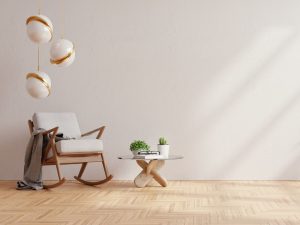Last Updated on July 18, 2024 by teamobn
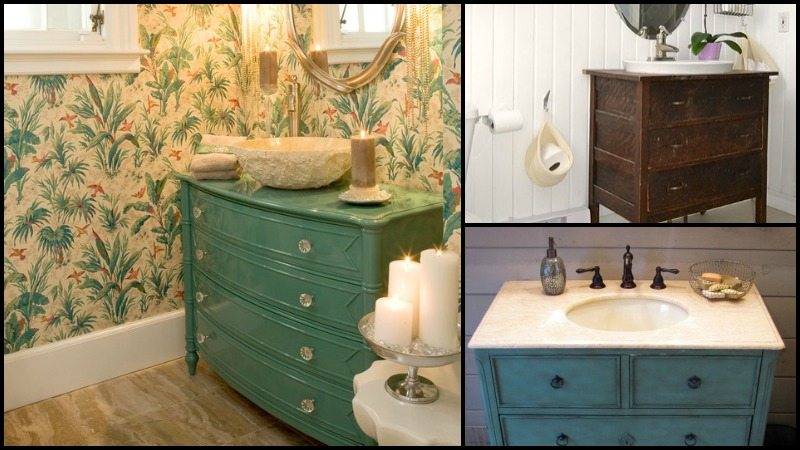
A vanity is a great addition to your bathrooms, but bathroom renovations can cost you a lot of money. That’s the reason why many people put off the bathroom of their dreams for too long.
But you can update your old bathroom without spending that much by turning your dresser to vanity. Have you been thinking of revamping your bathroom?
Here’s a DIY dresser to vanity project you make over the weekend for you
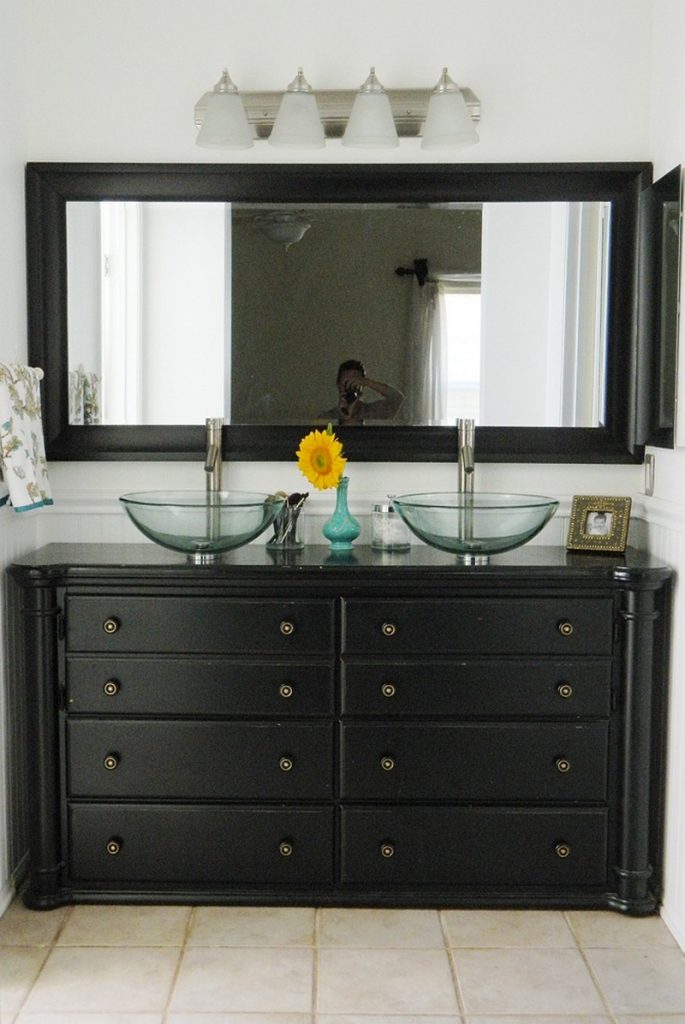
A vanity is a table with a mirror used for grooming and applying make-up. But, if you’re like me, you can be a cheap son of a gun and want to get your bathroom redo in a pinch and on a budget.
So, if you didn’t want to buy a new vanity, then take one of your existing old dressers and turned it into a vanity that has more storage than the original dresser.
However you choose to use it, a vanity is versatile, offering you the flexibility to make it what you want, when you want. Sure, bathroom vanity units offer storage for linens, towels, and toiletries – but you can convert a dresser to vanity.
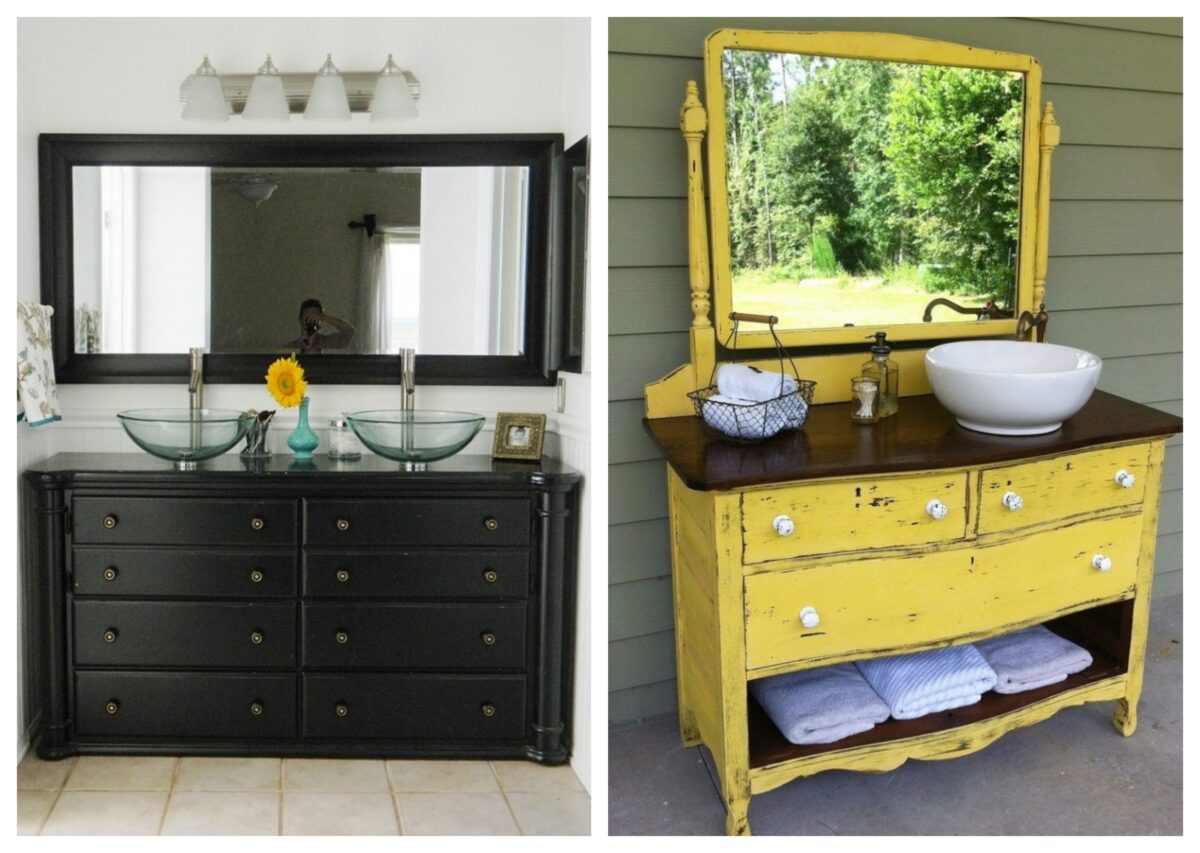
If you don’t have an existing dresser for this project, you can source cheap dressers from the Salvation Army, or any of your local thrift shops and online buy and sell site.
Turning an old dresser into a bathroom vanity is easier than it seems, and can be done over the weekend. If you’re looking for some remodelling ideas that would be worth your money, this DIY project is definitely on the list!
Could turning a dresser to vanity be your next weekend project?
Turning a Dresser to Vanity
Materials
- Used Dresser
- Bathroom Sink Set
- 2×4 Wood Scraps (for drawers, optional)
- Wood Stain/Finish
- Clear Caulking
- Screws
Tools
- Marker
- Jigsaw
- Sander
- Paint Brush
- Plumbing Tools
- Cordless Drill
Instructions
Clean your Old Dresser
Your old dresser can be a bit messy and dirty, it’s important that you clean them first before turning them into something new. You want to make sure that your old dresser is still in good shape and can be refurbished.
If there are missing drawers or cracks in the wood, you want to identify those issues before you start working. You can use a screwdriver to take off the drawers and use a sander to clean off any rust or grime.
Be sure to wipe the dresser with a clean cloth afterwards to ensure that it’s dry and ready for painting.
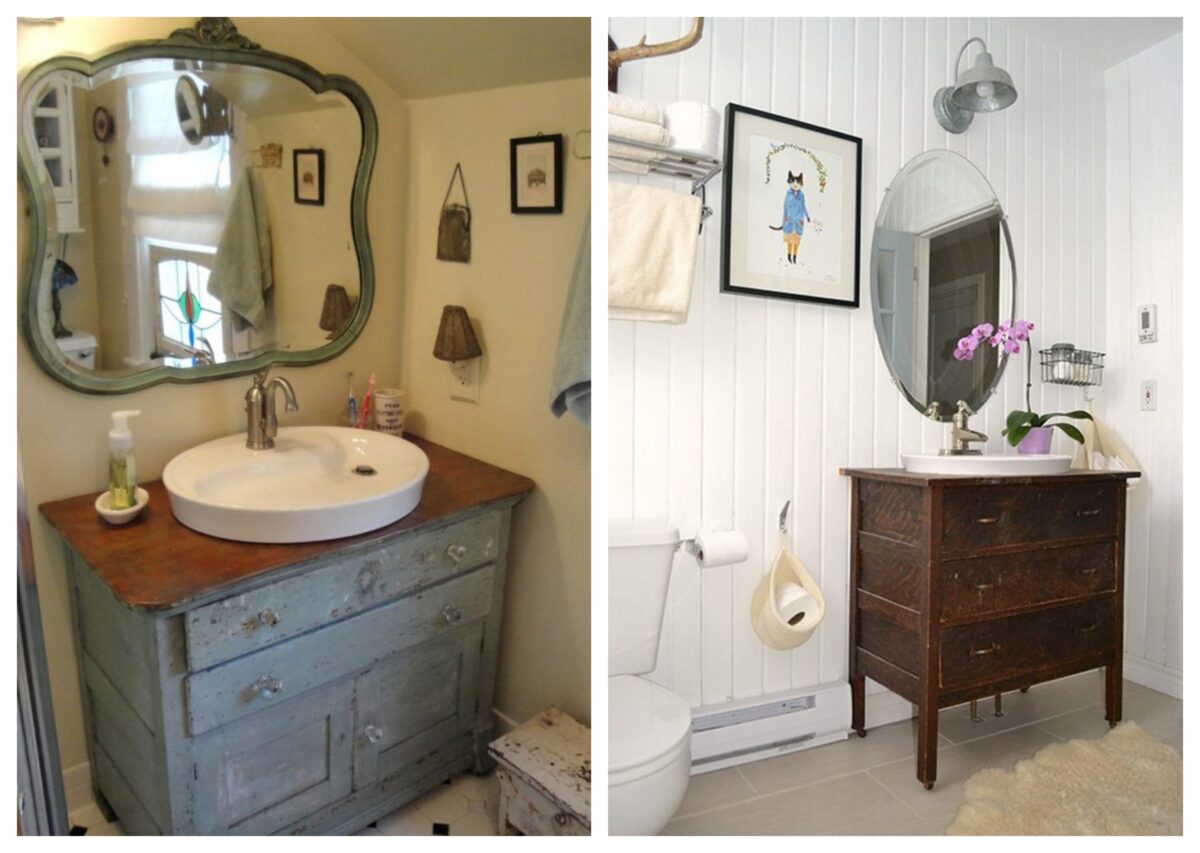
Attach the shelves (optional)
If you want to have more storage space for your vanity, you can opt to add shelves on top of your old dresser. If you have a top-heavy dresser, it is a good idea to secure the shelves to the wall so that the weight will be properly supported.
Use brackets and screws to ensure that the shelves will be secure. If you choose to use wood, you will need to paint it so that it matches the colour of your dresser.
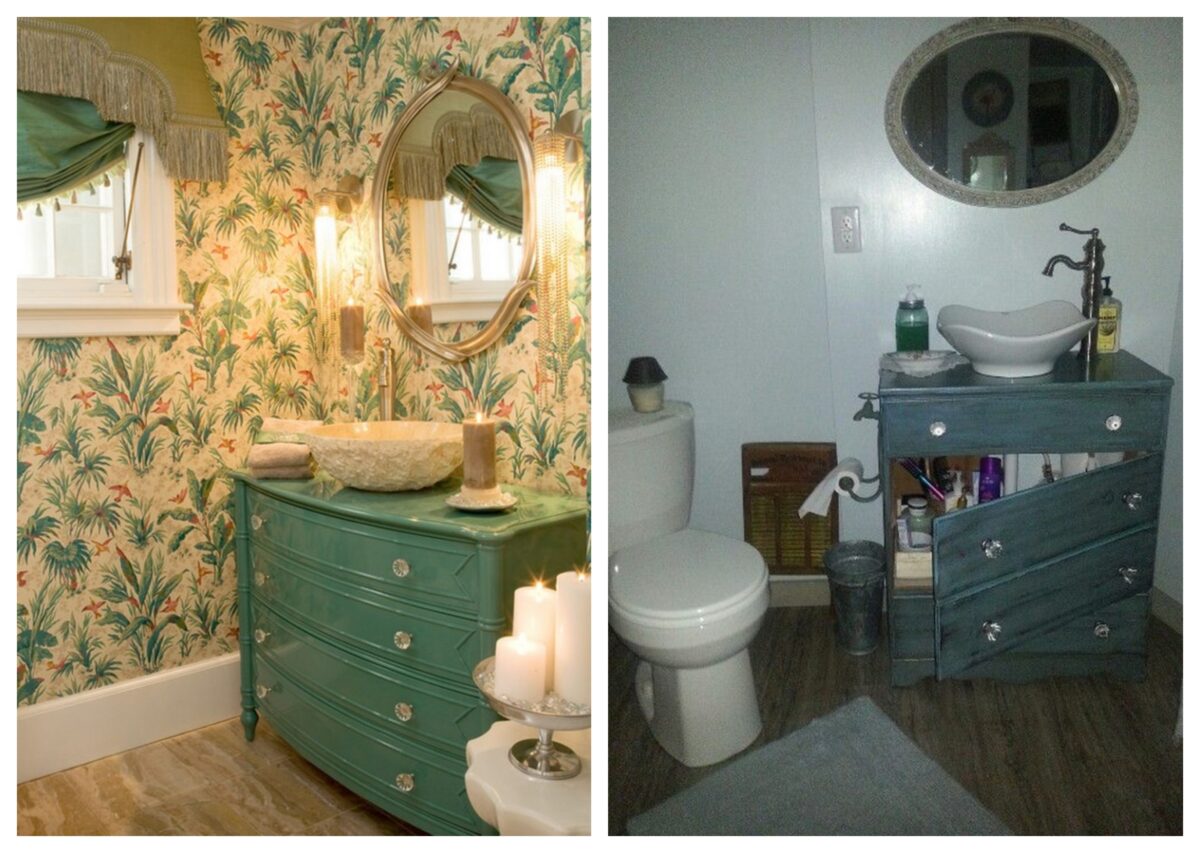
Install the sink and faucets
After installing the shelves, you should then incorporate the sink and faucet into your old dresser. The faucet is likely to be the most complicated part of the sink installation.
If your new faucet has a pop-up drain, you will have to attach it to the old drain assembly. There are two methods of doing this.
The first is to use a drain coupling adapter. This is a device that screws onto the end of the pop-up drain assembly, in which a new P-trap and drain assembly will be installed.
The second method is to remove the pop-up assembly entirely and install the new drain assembly directly into the sink.
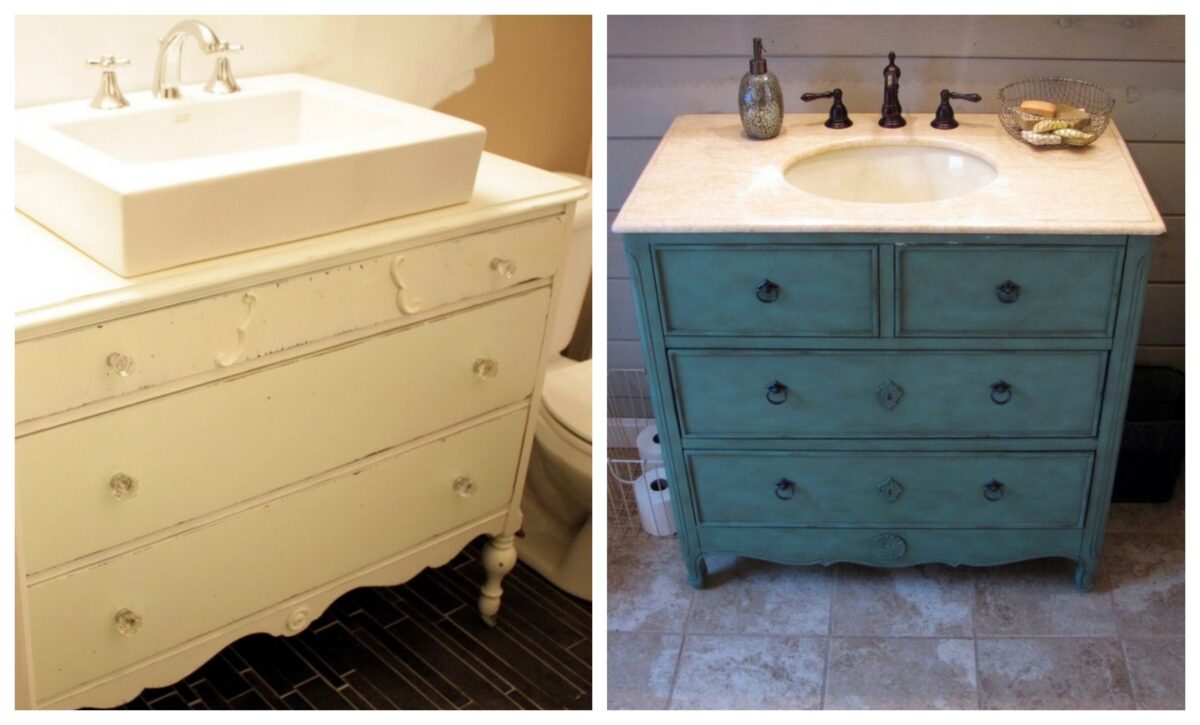
Hang the Mirror
The mirror will complete your bathroom vanity dresser set-up. While it’s not a safety concern, it’s a good idea to mount the mirror securely and level.
An unsecured mirror will wiggle if you touch it and can be the first thing to come off when a dresser is moved. A mirror mounted on a vanity dresser should be mounted with heavy-duty mirror hooks.
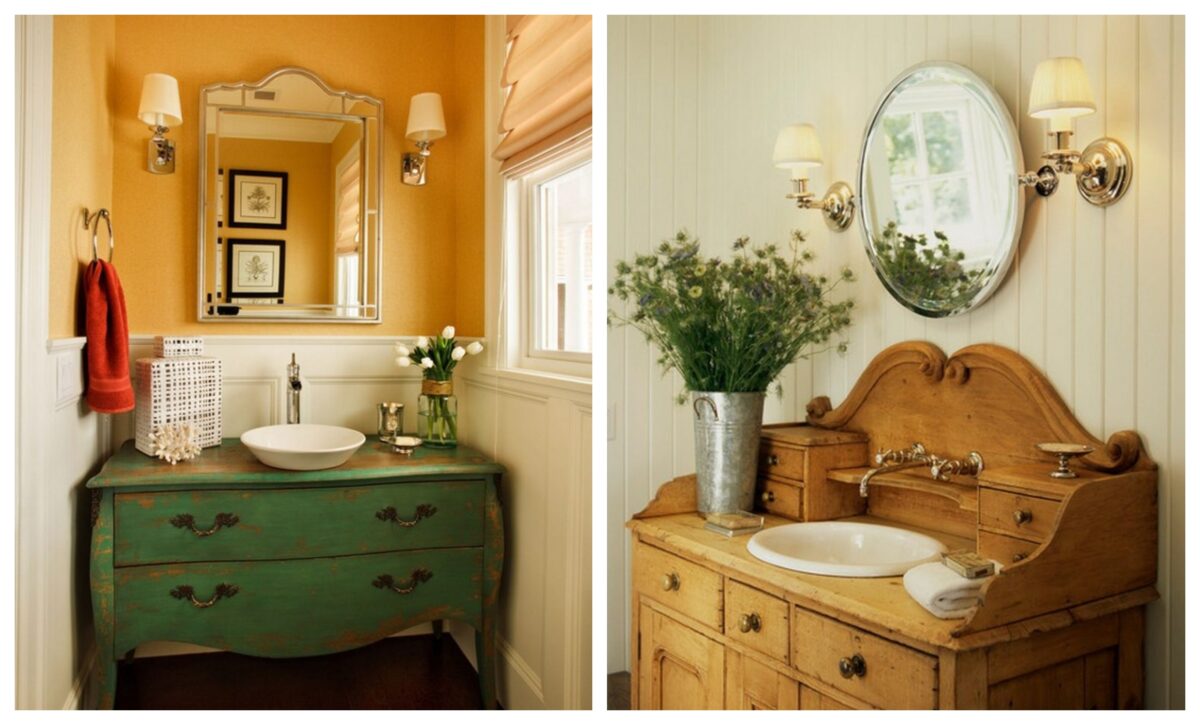
Click on any image to start the lightbox display. Use your Esc key to close the lightbox. You can also view the images as a slideshow if you prefer 😎
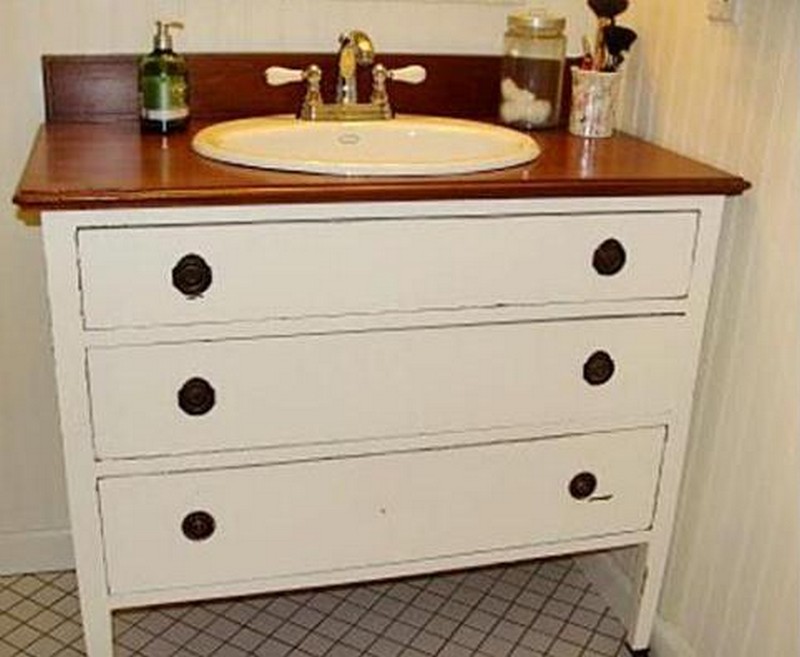
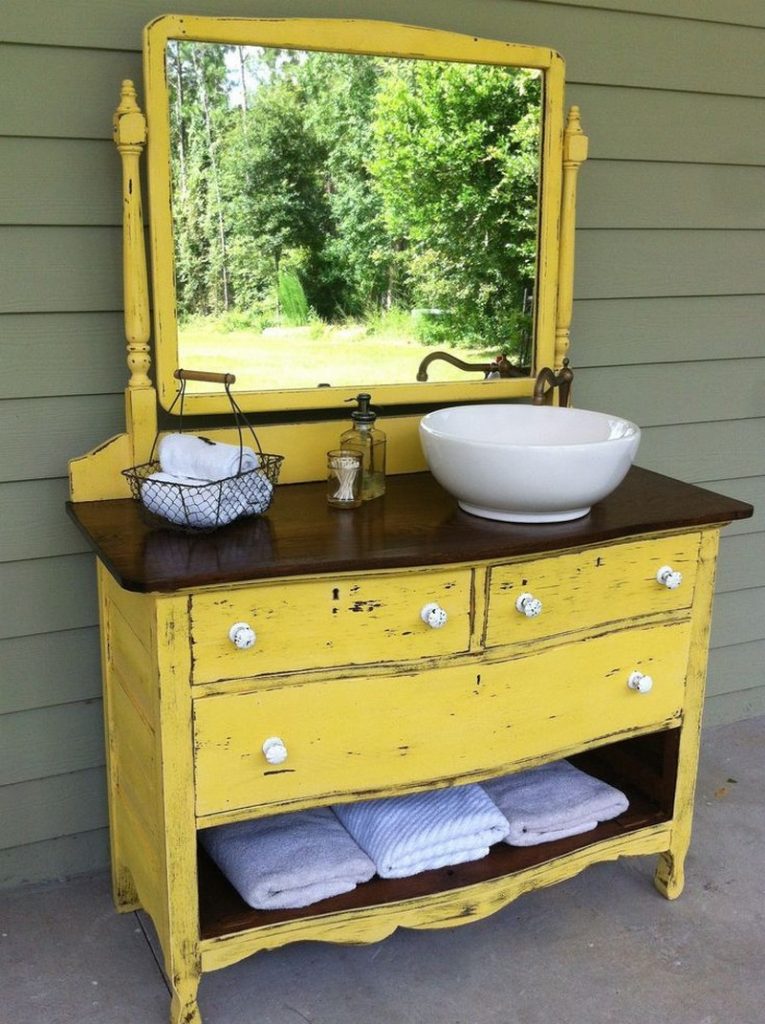
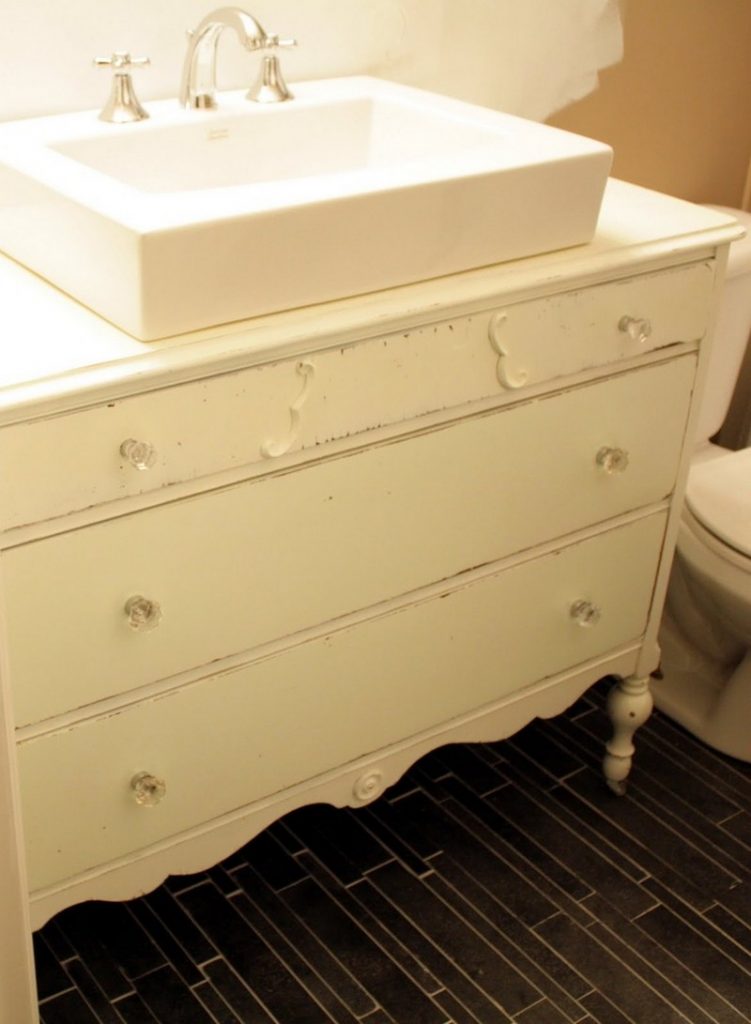
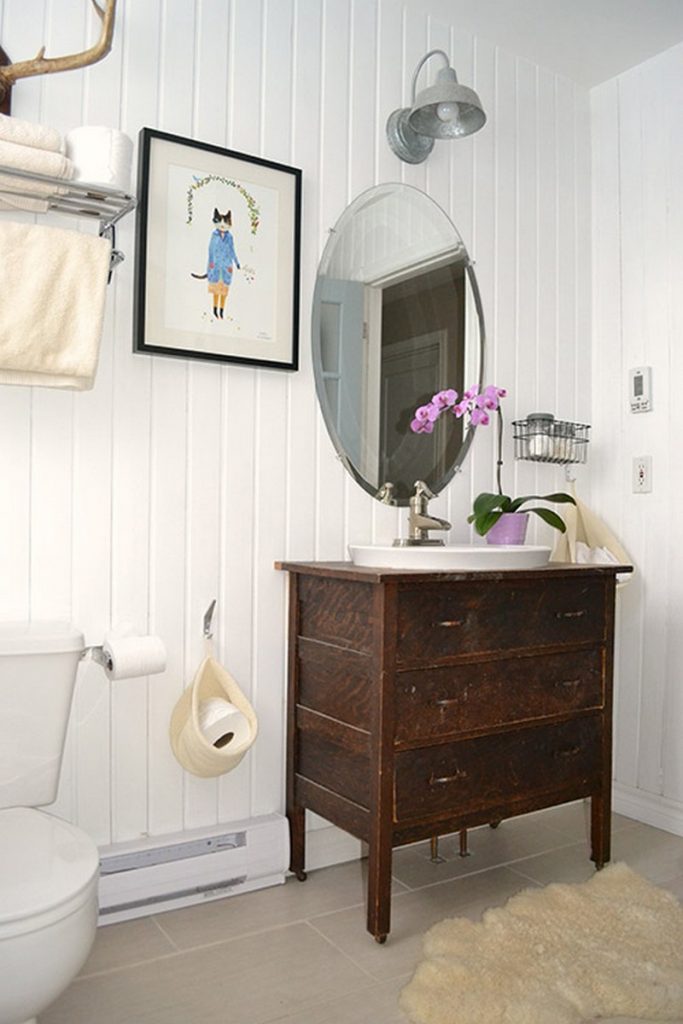
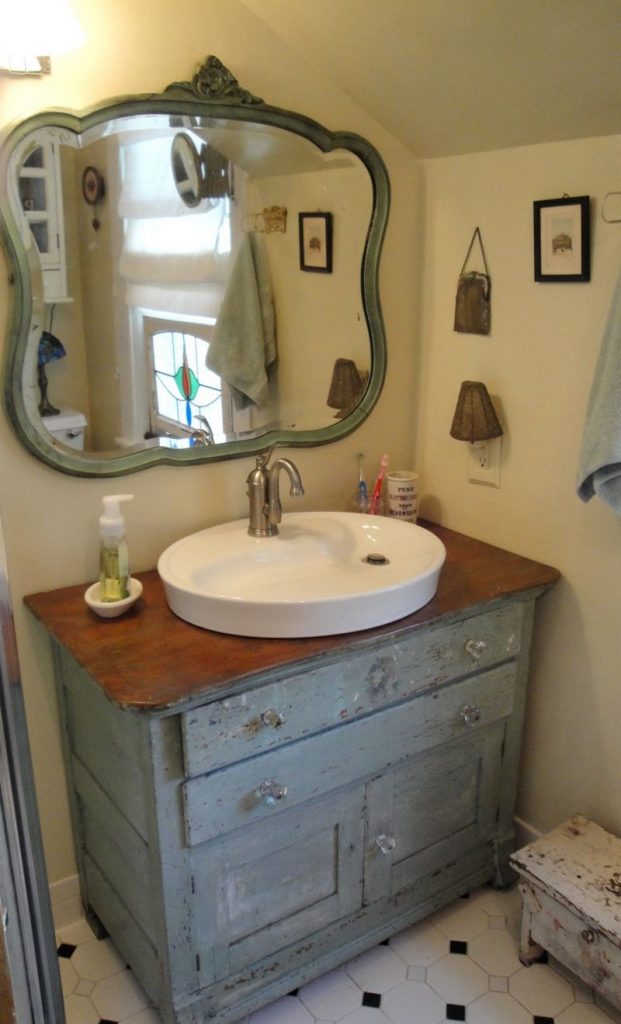
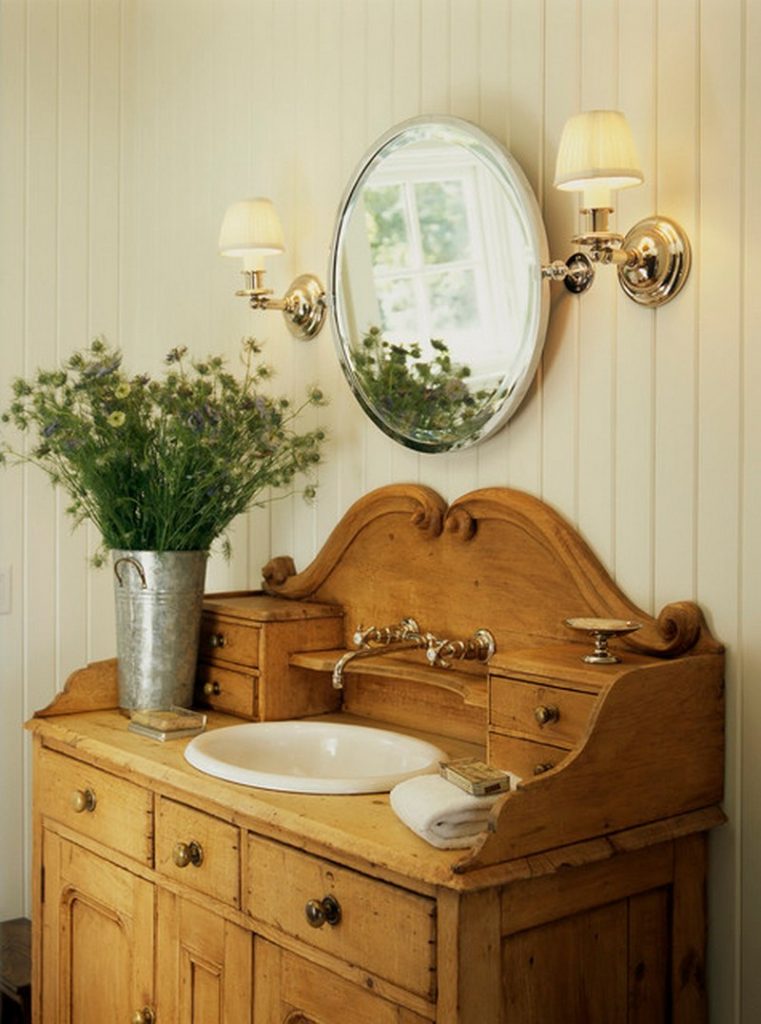


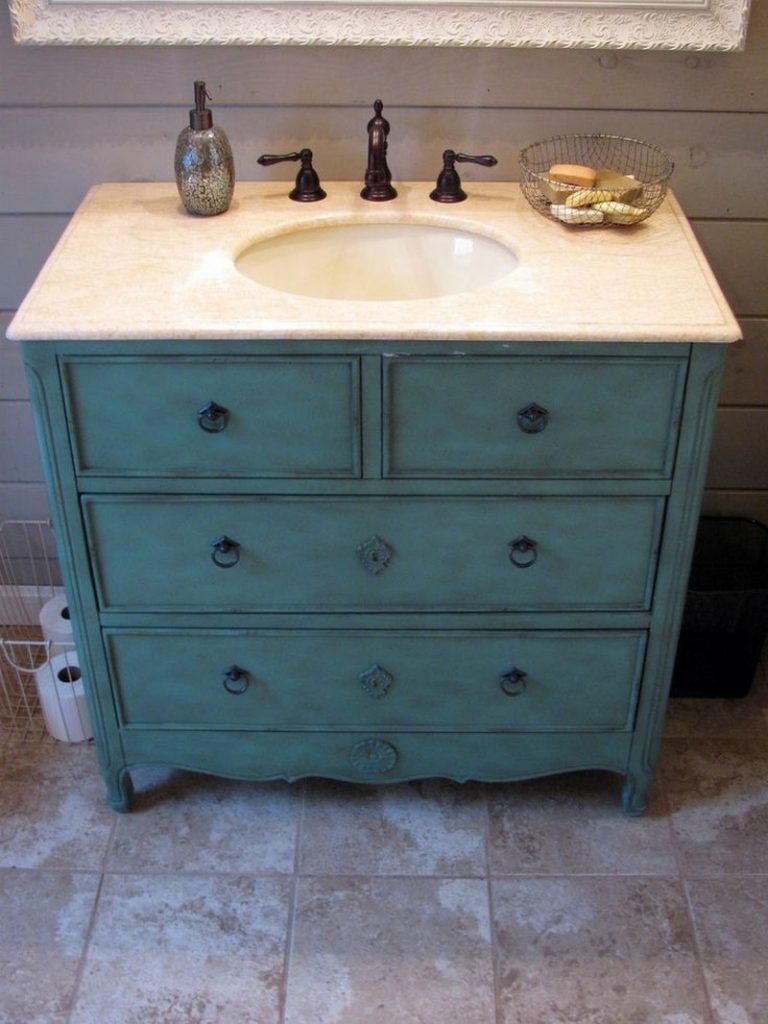
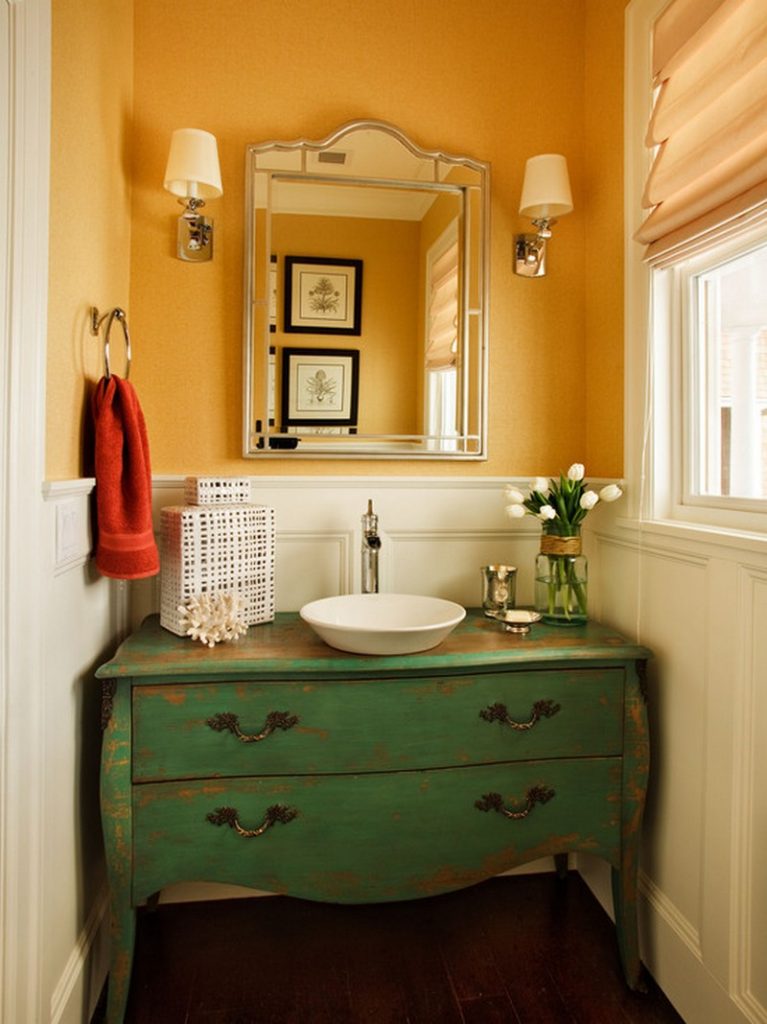
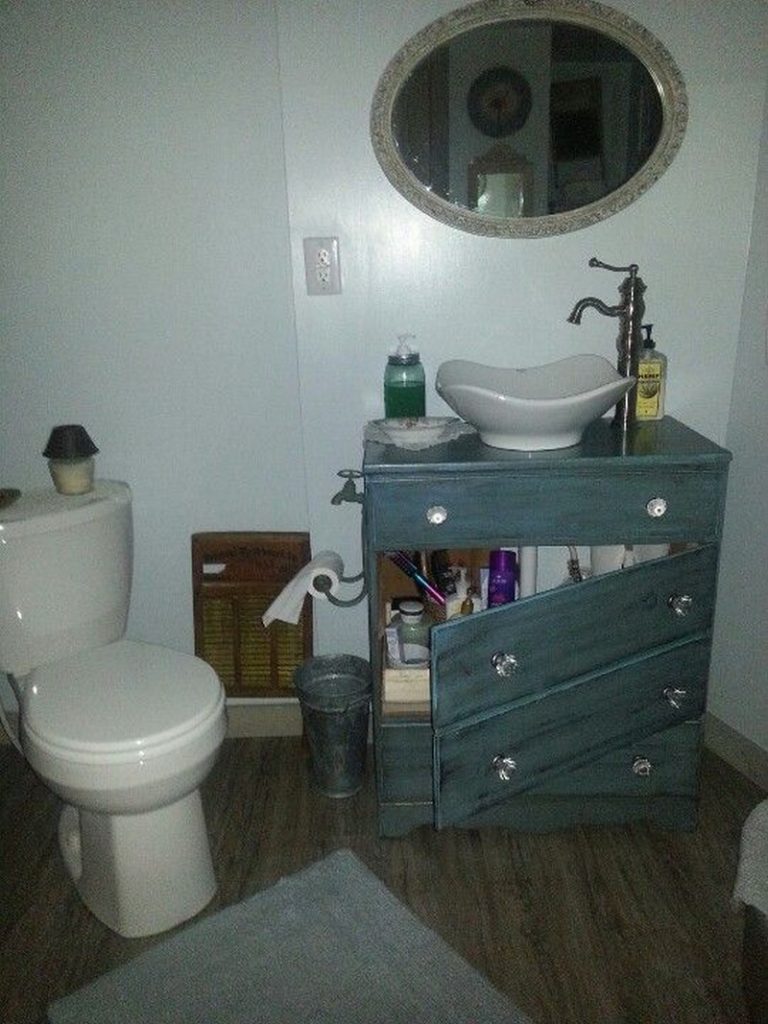
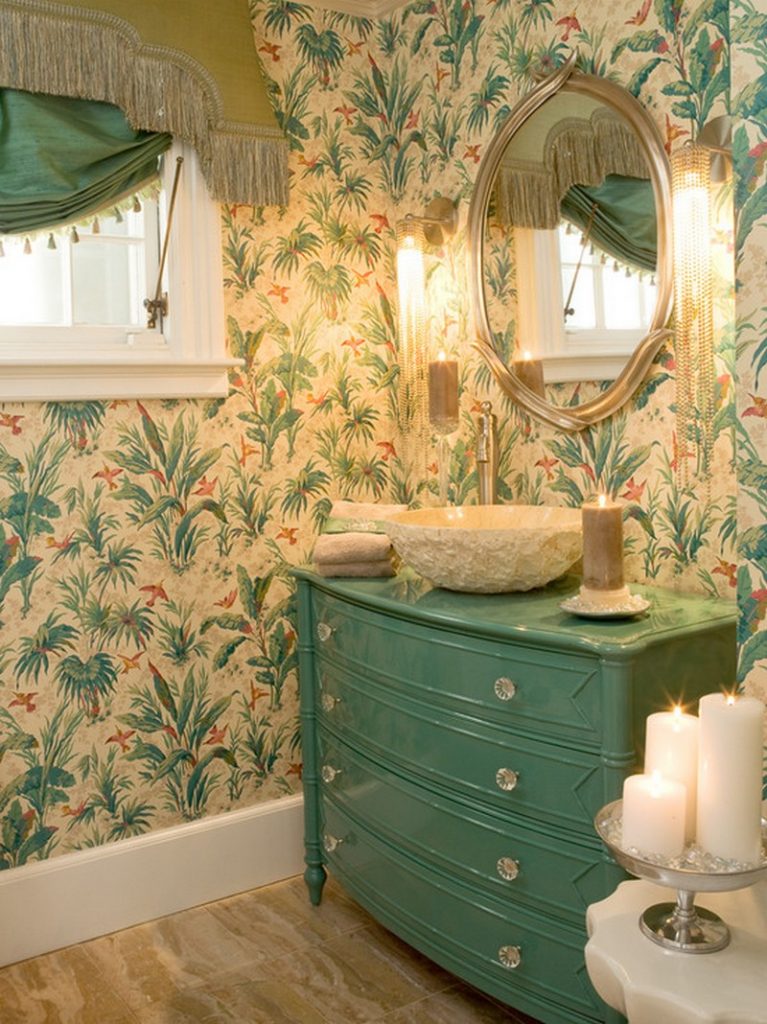
Thanks to An Oregon Cottage for this great project. You can get step-by-step instructions here…
Design and Style Tips
Transforming a dresser into a vanity offers a unique opportunity to inject personal style into your bathroom. Whether you’re aiming for a vintage charm or a modern twist, the design choices you make can significantly influence the overall appeal of your space. Here are some key tips to consider when designing your dresser to vanity conversion, ensuring it harmonizes beautifully with your existing decor.
Selecting a Color Scheme
Choosing the right color for your dresser to vanity conversion is crucial. It should complement the color palette of your bathroom tiles, walls, and fixtures. If your bathroom features neutral tones, a pop of color on the vanity can make it a focal point. For a more classic look, opt for whites, grays, or wood stains that enhance the natural beauty of the dresser.
Hardware Upgrades
The hardware on your dresser to vanity plays a pivotal role in tying the look together. Swap out old knobs and pulls with modern handles to give the dresser a contemporary edge, or choose vintage brass hardware to maintain a classic feel. This small change can make a big impact on the overall aesthetic and functionality of your vanity.
Integrating Decorative Elements
Adding decorative elements can elevate the dresser to vanity from a functional piece of furniture to a standout feature in your bathroom. Consider installing a decorative trim around the edges or adding a custom tile backsplash that complements the design. These elements can enhance the dresser’s appearance and help integrate it into the bathroom’s design theme.
Lighting Considerations
Proper lighting is essential for any vanity area. When converting a dresser to vanity, think about the placement and style of lighting. Sconces on either side of the mirror provide balanced lighting for grooming tasks, while an overhead pendant can add a touch of elegance. Ensure the lighting fixtures match the style of your dresser to create a cohesive look.
By carefully considering these design and style tips, your dresser to vanity conversion will be not only a functional addition to your bathroom but also a reflection of your personal style. Whether you’re going for a sleek, modern look or a cozy, vintage vibe, these tips will help you achieve the aesthetic you desire.
Advanced Customization Options
Taking your dresser to vanity transformation to the next level involves incorporating advanced customization options that can truly make your piece stand out. These enhancements not only improve the functionality of your vanity but also add a unique touch that reflects your personal taste and creativity.
Adding a Backsplash
Installing a backsplash is a fantastic way to enhance the durability and style of your dresser to vanity. Tiles are a popular choice due to their durability and water resistance. Ceramic tiles offer a classic look and are available in numerous colors and patterns. Glass tiles add a modern touch and can reflect light to make the bathroom appear larger.
Stone tiles, such as marble or granite, provide a luxurious and sturdy option. When selecting tiles, consider the color and style of your vanity and the overall bathroom design to create a cohesive look. Additionally, you can experiment with different grout colors to either blend in or contrast with the tiles, further customizing your design.
Integrating Multiple Sinks
For those with enough space, adding dual sinks to your vanity can significantly increase its functionality, making it ideal for shared bathrooms. This modification requires careful planning in terms of plumbing and space allocation but offers considerable convenience and a modern look.
When integrating multiple sinks, it’s essential to ensure that the dresser is large enough to accommodate them without compromising storage space. Consider the placement of the sinks to maximize countertop space and ensure there’s enough room for basic bathroom activities. Adding dual sinks can transform your dresser into a more efficient and attractive vanity that caters to the needs of multiple users.
Creating Hidden Compartments
Maximizing the utility of your dresser to vanity by creating hidden compartments can enhance its functionality dramatically. These compartments are perfect for storing additional bathroom items discreetly or for hiding plumbing components that might detract from the aesthetic of the vanity.
Consider converting existing drawers into false fronts that tilt out or slide away to reveal plumbing while maintaining the outward appearance of a fully functional drawer. Alternatively, you can design a hidden panel at the back or side of the dresser, providing easy access to plumbing if necessary. This approach helps maintain the dresser’s beauty and historical character while adapting it to modern bathroom needs.
Considering these sophisticated customization techniques will help you turn an ordinary dresser to vanity that fit all your bathroom requirements. These improvements not only make your vanity more useful but also help it to become the center point of your bathroom décor.
Conclusion
Turning a dresser to vanity is a creative and cost-effective way to add unique charm and increased functionality to your bathroom. This DIY project allows you to customize the design to fit your style preferences and practical needs. Embracing this transformation can give your space a personal touch while making the most of what you already have.
If you liked this project, you will also like viewing these easy DIY projects…





